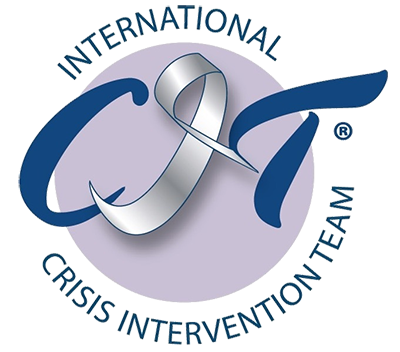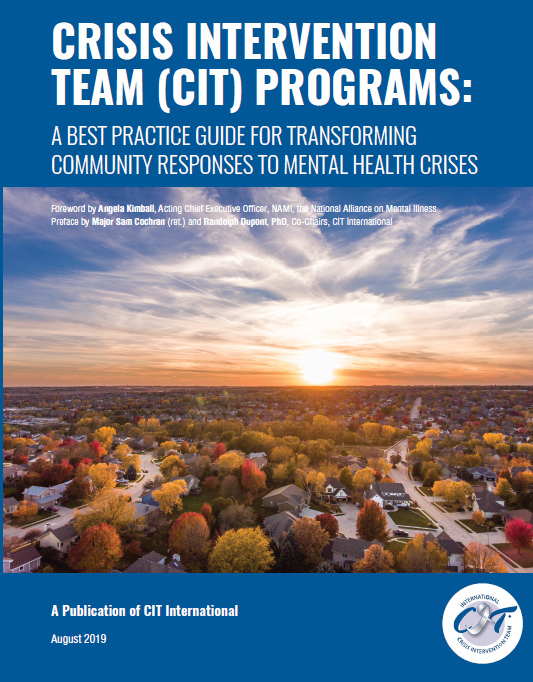Contact Us
To provide feedback on the Community Policing Dispatch, e-mail the editorial board at CPDispatch@usdoj.gov.
To obtain details on COPS Office programs, publications, and resources, contact the COPS Office Response Center at 800-421-6770 or AskCopsRC@usdoj.gov

U.S. Department of Justice
Office of Community Oriented Policing Services
Washington, DC 20530
 It’s a familiar scenario: Officers receive a call about a subject acting erratically. When they arrive at the scene, they recognize the situation as a mental health crisis. This scenario could end many ways, but too often, the individual does not receive effective mental health care that addresses their symptoms or reduces the likelihood of subsequent police encounters.
It’s a familiar scenario: Officers receive a call about a subject acting erratically. When they arrive at the scene, they recognize the situation as a mental health crisis. This scenario could end many ways, but too often, the individual does not receive effective mental health care that addresses their symptoms or reduces the likelihood of subsequent police encounters.
Jails are overcrowded with people with mental illnesses, and law enforcement agencies are often the first and only responders to mental health crisis situations. Most law enforcement agencies are familiar with crisis intervention team (CIT) training. However, many community leaders are not aware of how CIT programs really work to address mental health crisis situations safely and effectively and the core elements of a successful CIT program. In late 2019, CIT International published a comprehensive guide to the CIT model, providing communities step-by-step guidance on developing successful programs.
Here are some highlights of the new guide, entitled Crisis Intervention Team (CIT) Programs: A Best Practice Guide for Transforming Community Responses to Mental Health Crises.
The Goals of CIT are Broader than You Think
While CIT programs are best known for training officers in crisis response, they are not strictly focused on improving police responses to crisis situations. A CIT program sets ambitious goals for the entire crisis response system. Success requires engagement and accountability from mental health systems, elected leaders and community members, in addition to law enforcement. These goals include the following:
- To improve safety for everyone involved during law enforcement encounters with people experiencing a mental health crisis
- To increase connections to effective and timely mental health services for people in mental health crisis
- To use law enforcement strategically during crisis situations—such as when there is an imminent threat to safety or a criminal concern—and increase the role of mental health professionals, peer support specialists, and other community supports;1 in the long term, a CIT program should reduce the role of law enforcement during mental health crisis situations and help more people get access to mental health services and supports first
- To reduce the trauma that people experience during a mental health crisis and thus contribute to their long-term recovery
CIT Brings a Team Approach to Addressing Crisis Situations
CIT programs address the entire mental health crisis situation; it’s not just about creating more work for law enforcement. The program also addresses how mental health professionals and other supports are involved in crisis response. CIT examines how systemic problems—like outdated policies, poor communication, or a lack of mental health services—contribute to crisis situations. CIT programs bring partners from across mental health and criminal justice systems—together with community advocates—to update policies, improve communication, identify best practices, and advocate for increased mental health services.
This overhaul should be comprehensive, with every partner looking at what it can do to improve its own organization and services and how it communicates and coordinates with others in the crisis response system.
CIT is a Governed by a Steering Committee
CIT officers are the most visible faces of a CIT program, but a successful CIT program is not led solely by law enforcement. CIT programs should be governed by a steering committee made up of executives from mental health agencies and mental health advocacy groups, along with law enforcement.
A successful CIT program represents an overlap of many different constituents’ interests, including law enforcement, individuals with mental illnesses, family members, and mental health agencies. Shared leadership allows all interests to be represented equally. It also creates mutual accountability and greater opportunities for sharing ideas across systems. Finally, it allows the program to fund-raise and appeal to elected leaders with more flexibility.
There is Help to Start or Sustain a CIT Program
 The goals of CIT may seem challenging, but there’s significant support for communities starting or continuing this challenge.
The goals of CIT may seem challenging, but there’s significant support for communities starting or continuing this challenge.
- CIT International’s best practice guide provides step-by-step guidance on starting your program. CIT International also provides training of trainers, technical assistance and an annual conference to connect with colleagues from around the world.
- Other national organizations and their local chapters provide assistance to local CIT programs. NAMI (the National Alliance on Mental Illness), an organization of people living with mental illnesses and their family members, advocates for CIT programs nationwide. The International Association of Chiefs of Police (IACP), CIT International, and the National Council for Behavioral Health, though their One Mind Campaign, support CIT training, partnership with mental health agencies, and mental health crisis response policies.
- Many states have a robust network of CIT programs that assist new programs, develop statewide standards, support peer-to-peer learning and coordinate crisis response systems regionally. For the best contact in your state, email admin@citinternational.org.
Law enforcement leaders have an opportunity to reach out to partners in their community and programs across the country for support in tackling mental health crisis situations. Read the CIT best practices guide to learn more!
Laura Usher, MS
Independent Consultant
Amy Watson, Ph.D.
President, CIT International Board of Directors
Professor, University of Illinois at Chicago
References:
1. CIT advocates know that there are times when an individual with mental illness commits a crime for which arrest is the appropriate response. Sometimes an individual with mental illness may display criminal behavior that is unrelated to mental health concerns or sometimes criminal behavior is so serious that an officer has no choice but to make an arrest.
Subscribe to Email Updates
To sign up for monthly updates or to access your subscriber preferences, please enter your email address in the Subscribe box.






